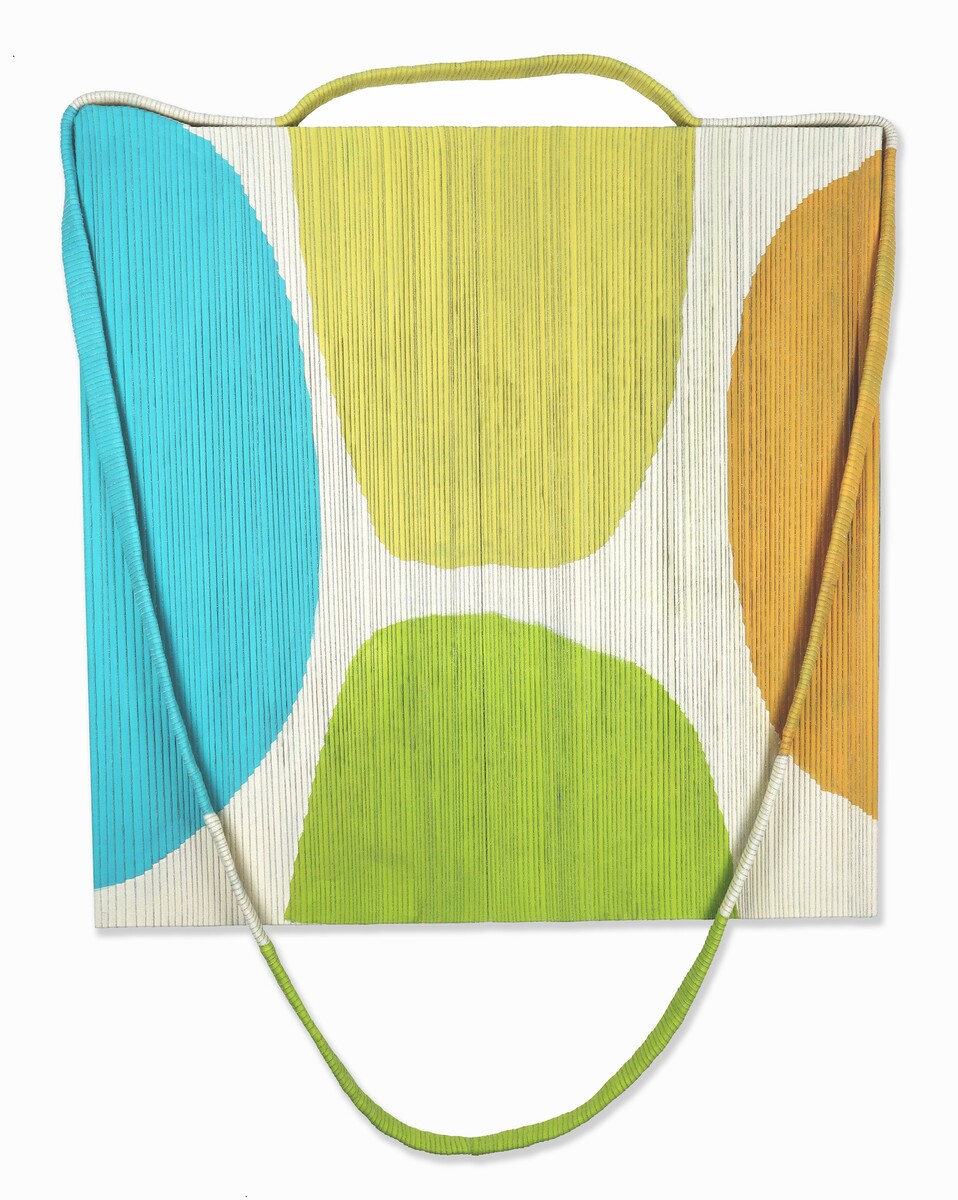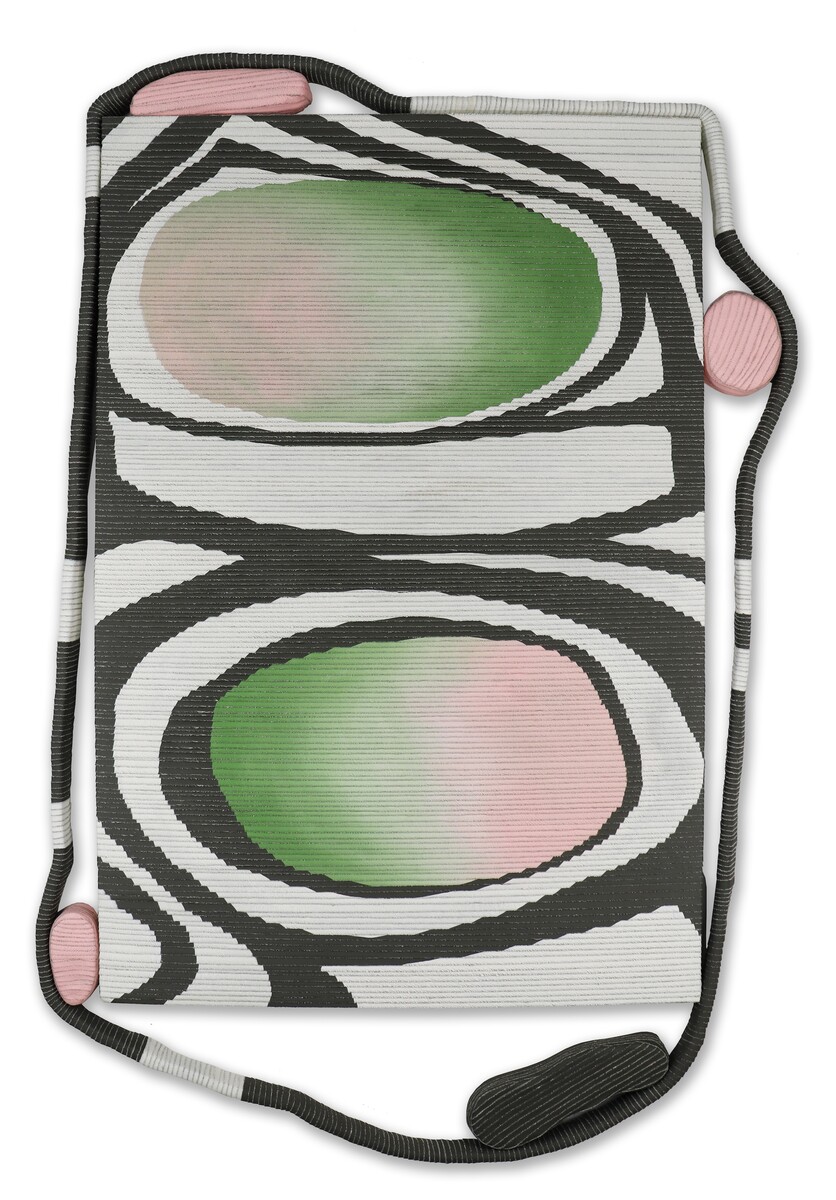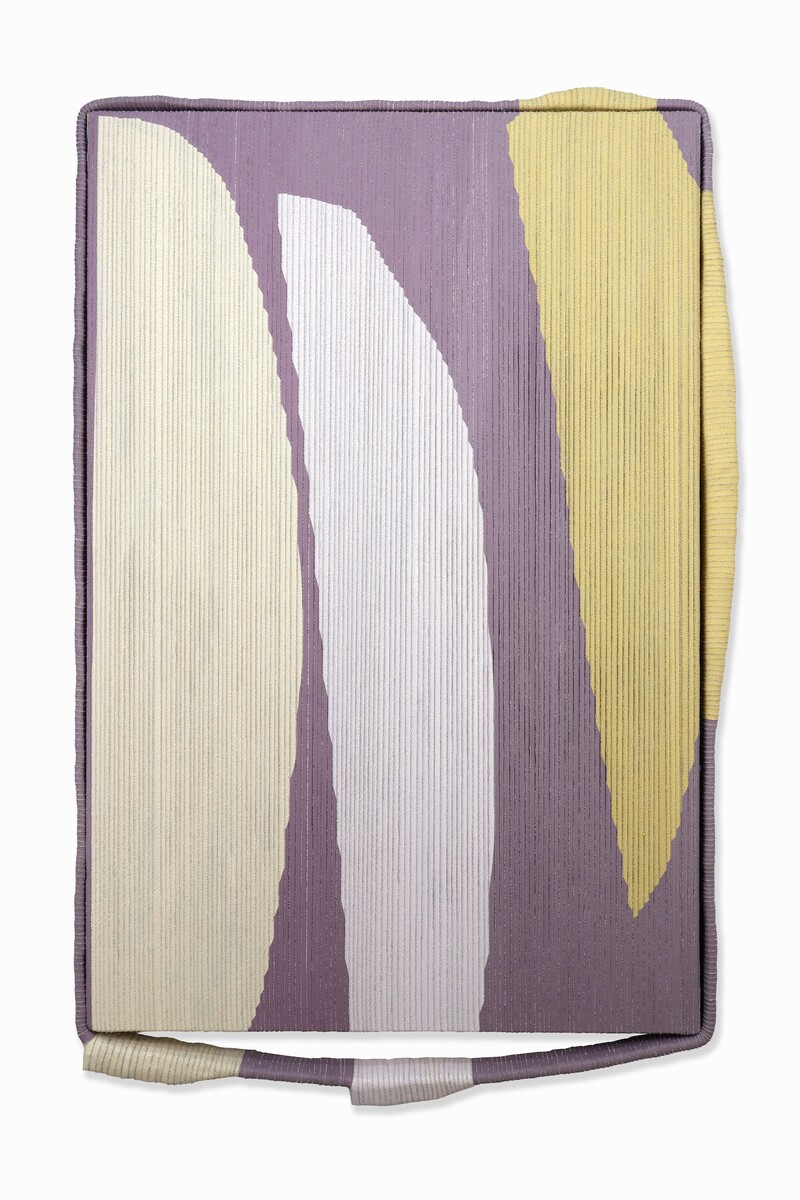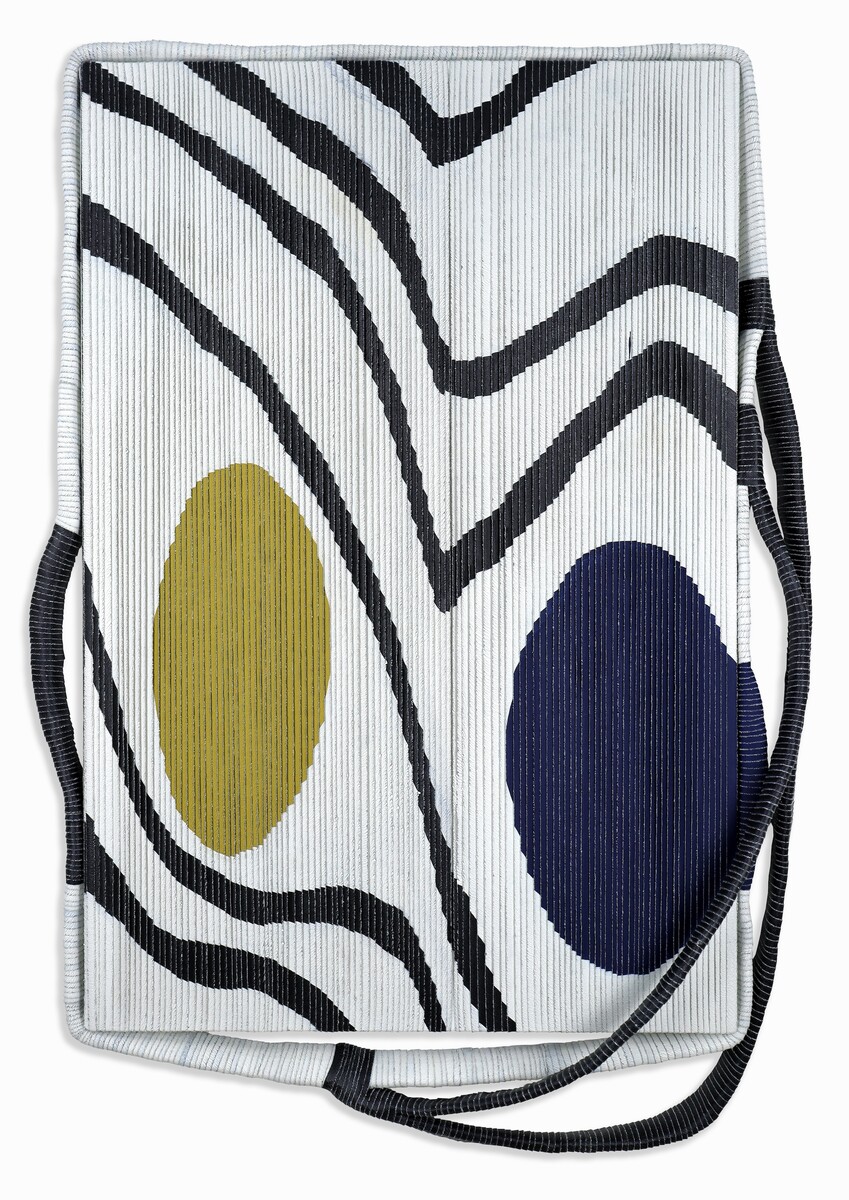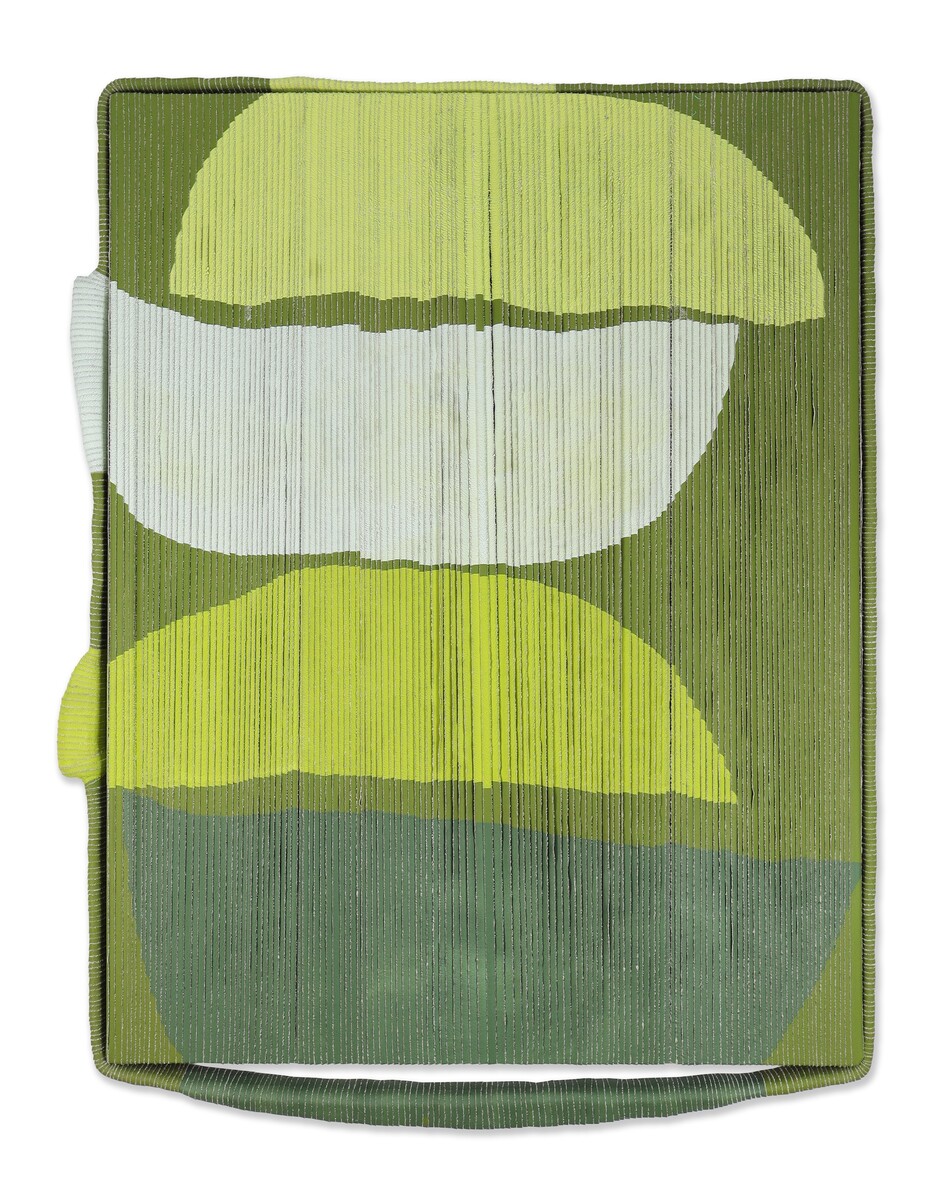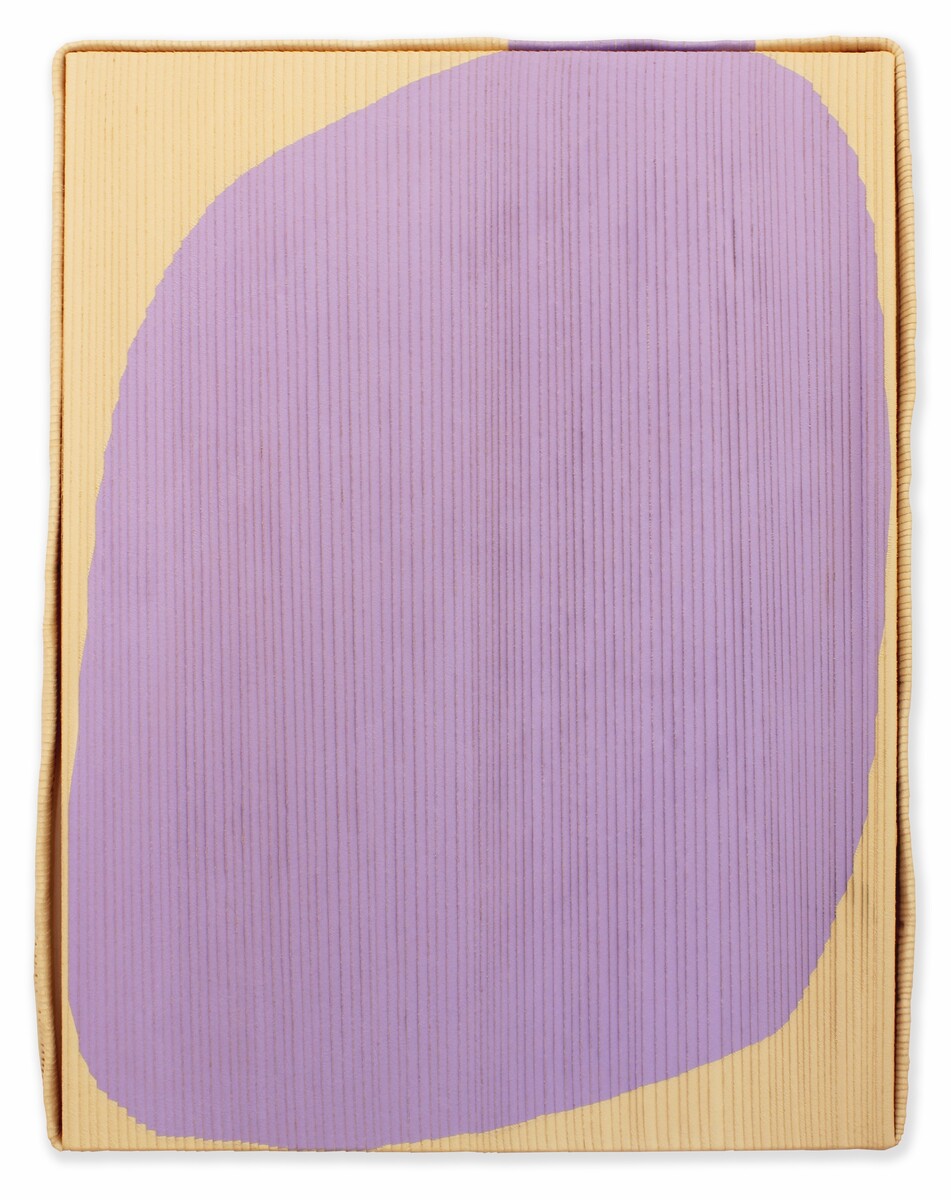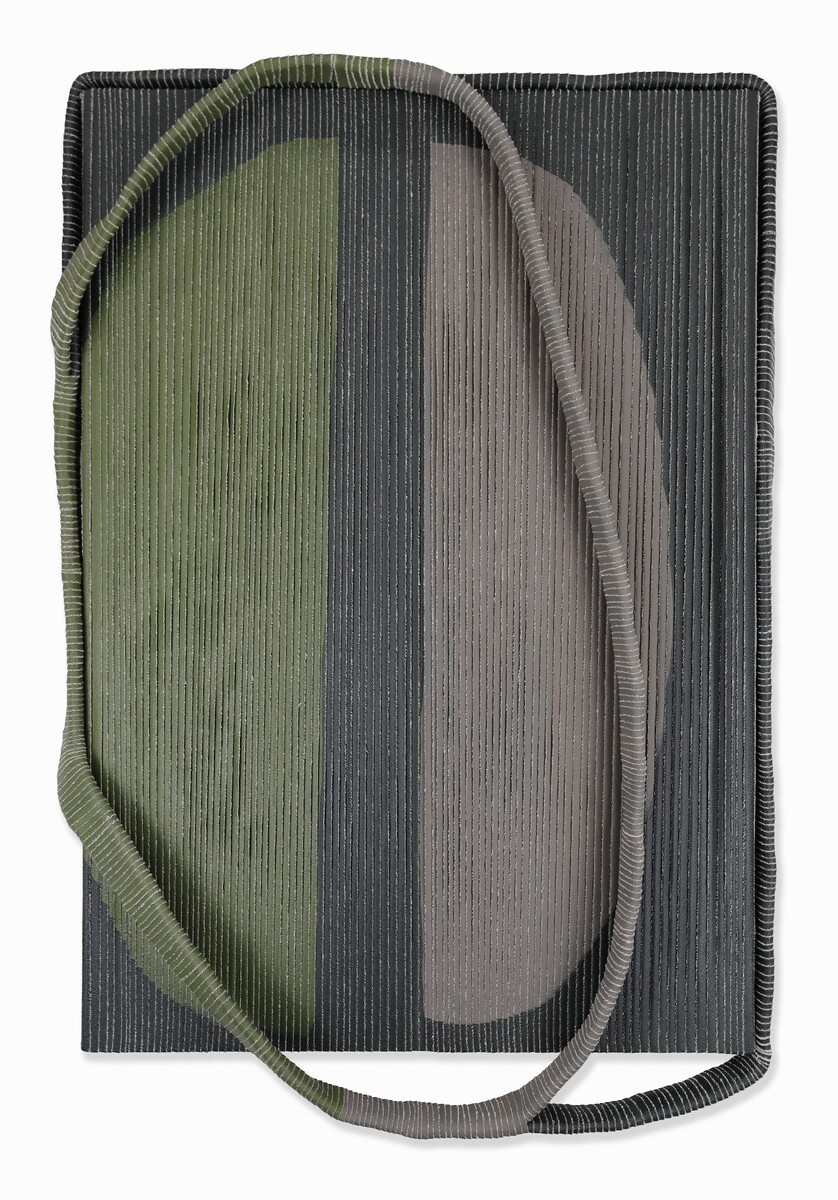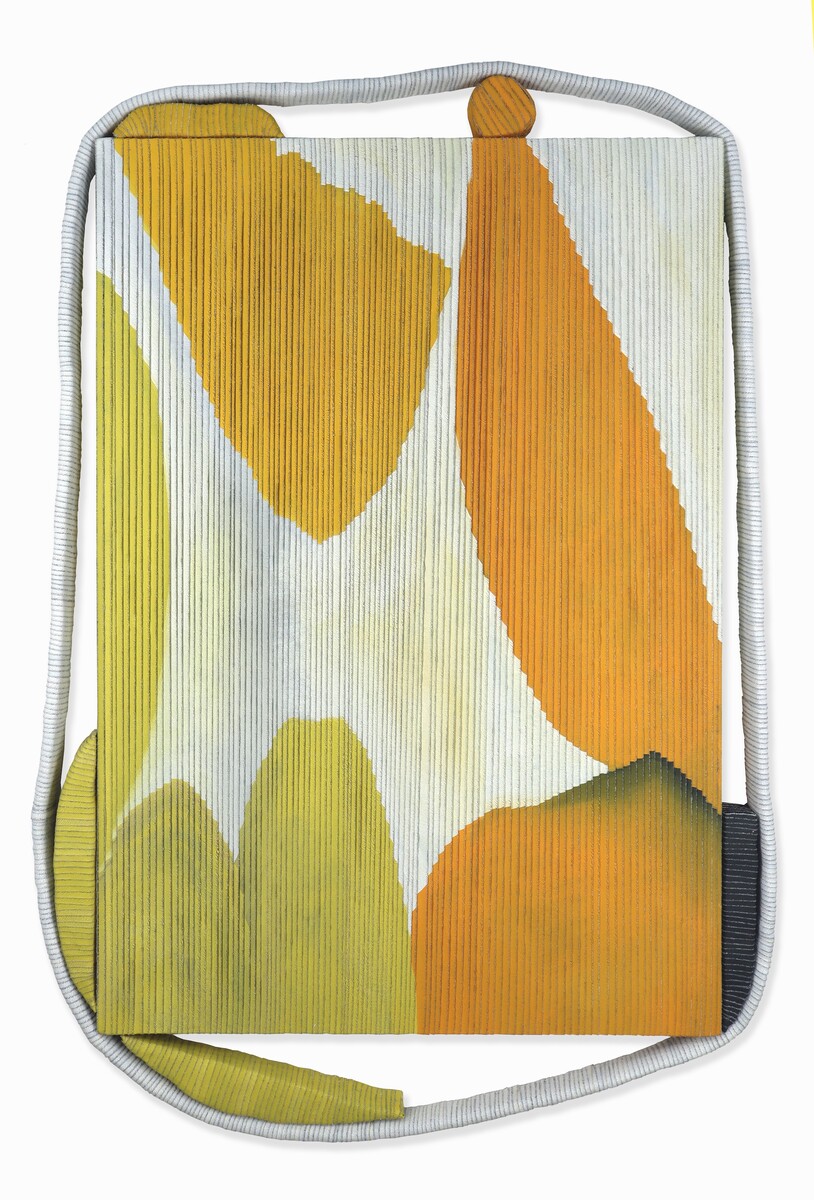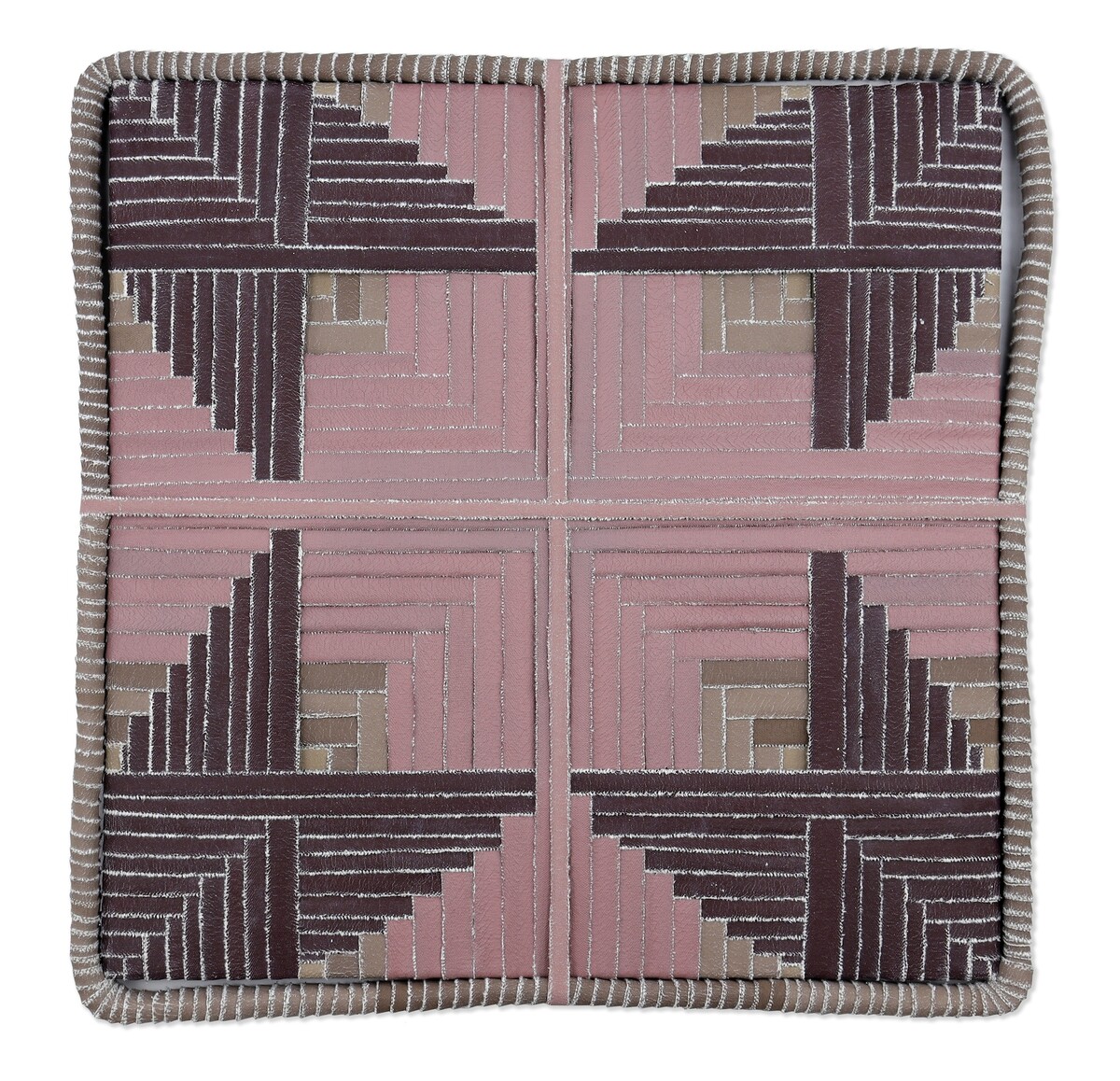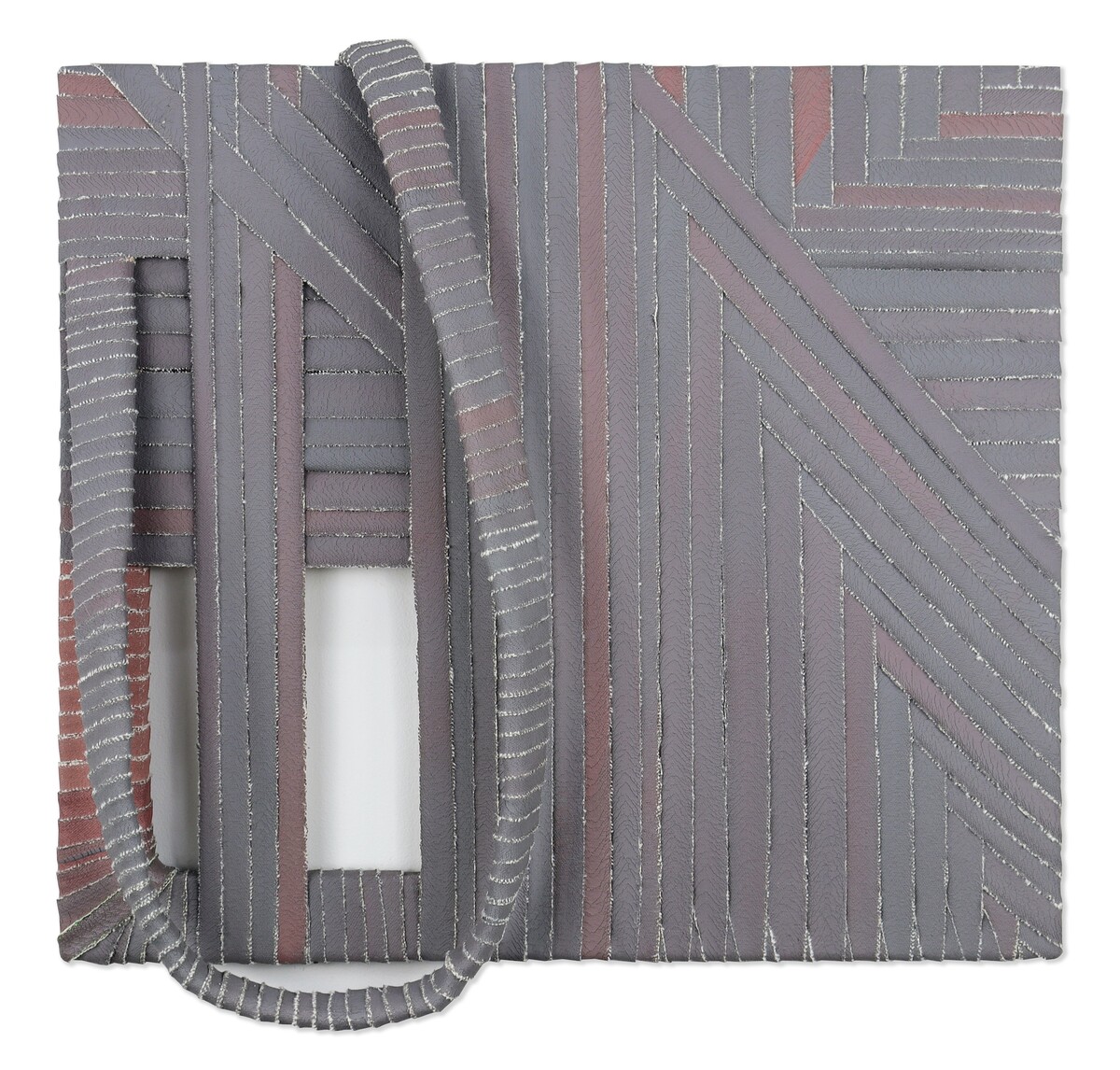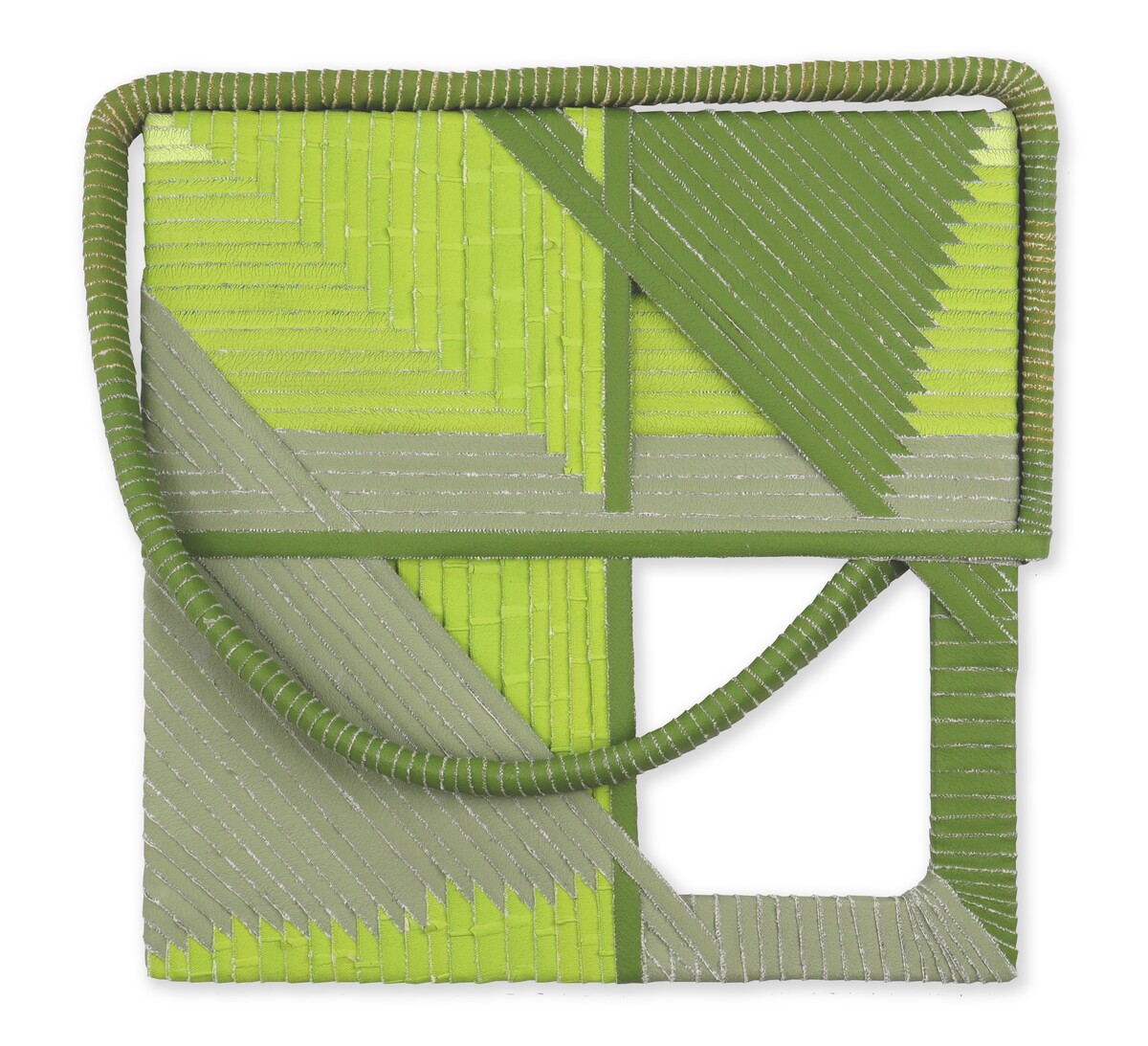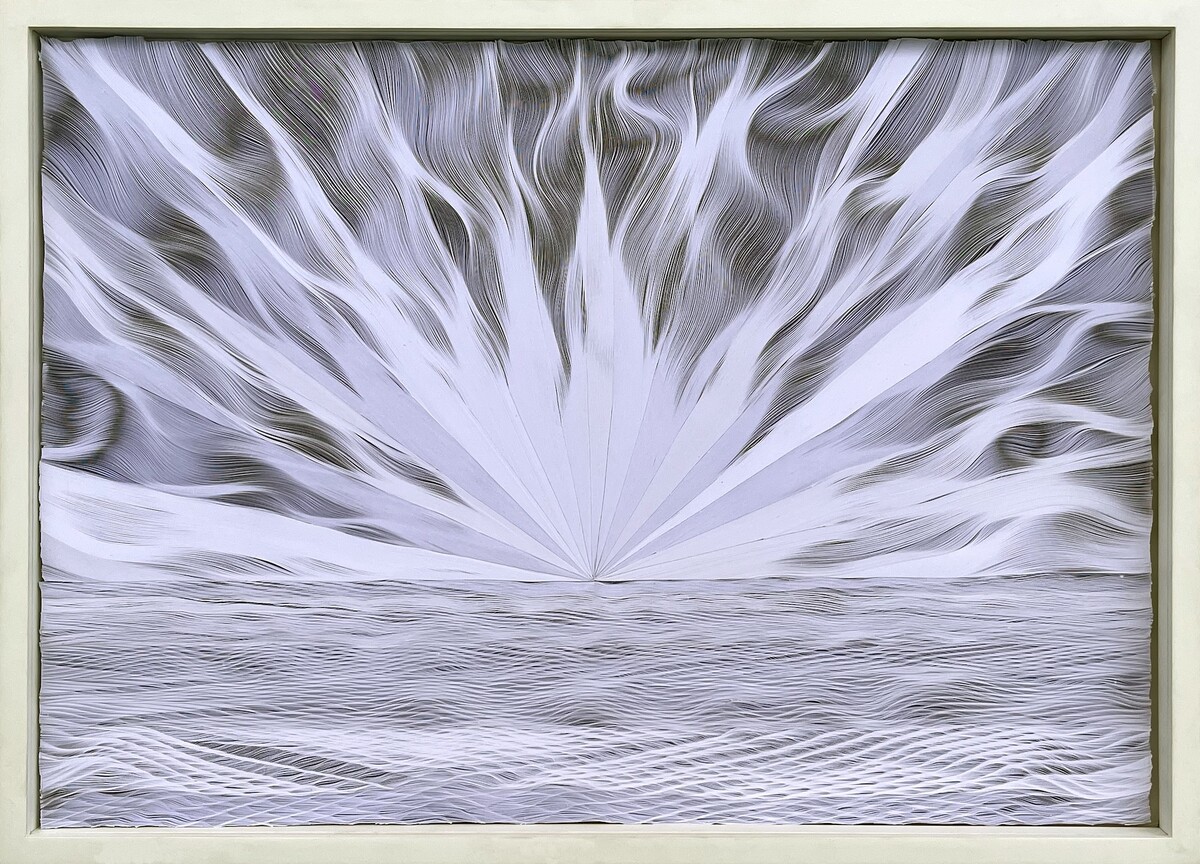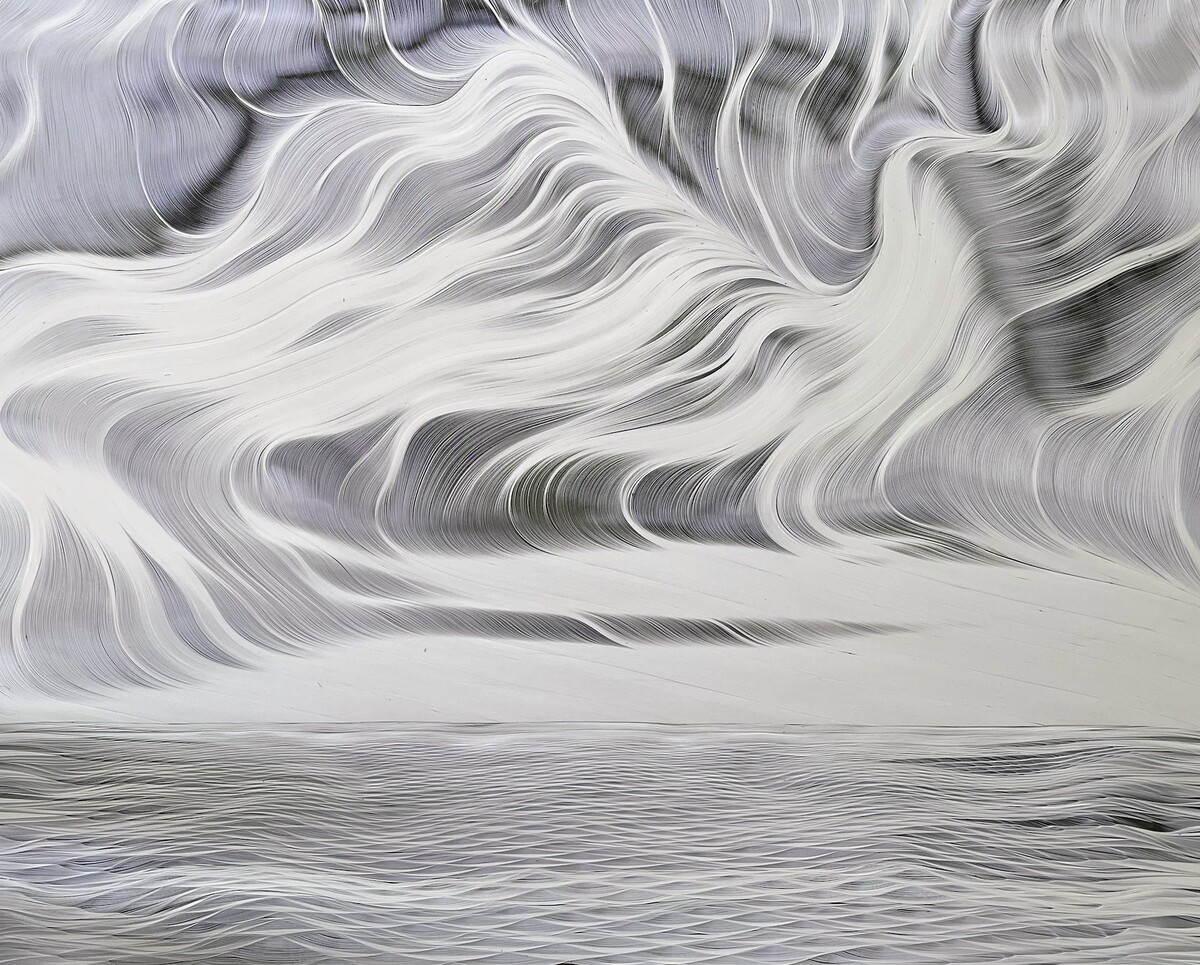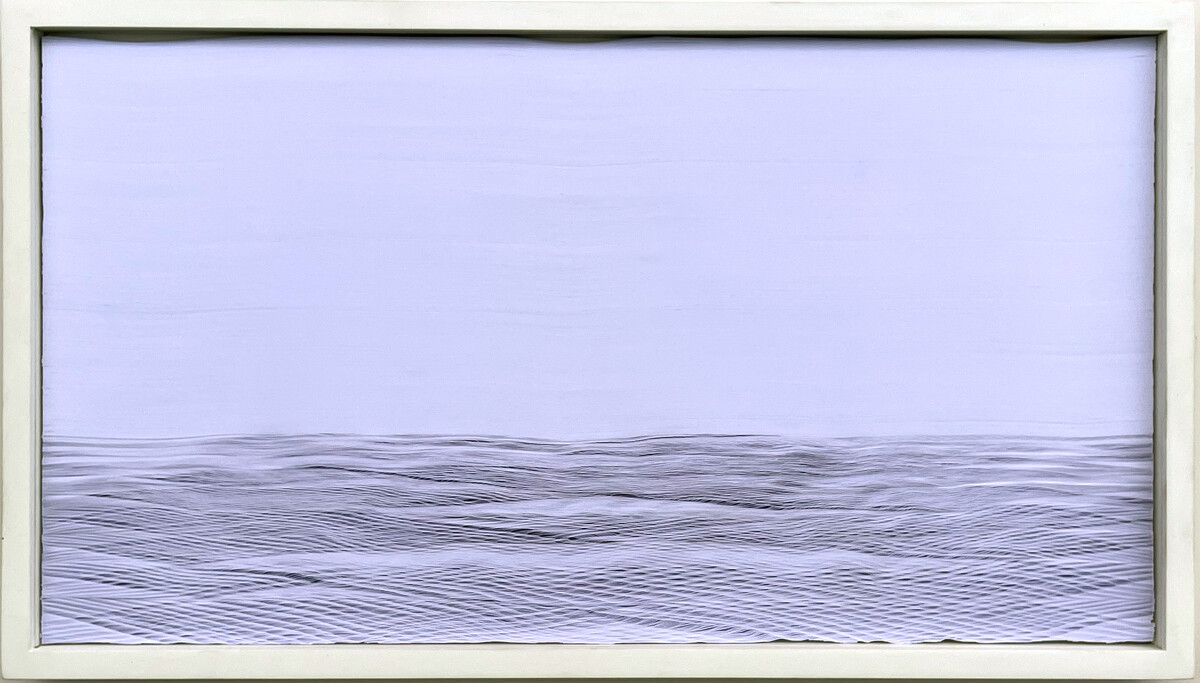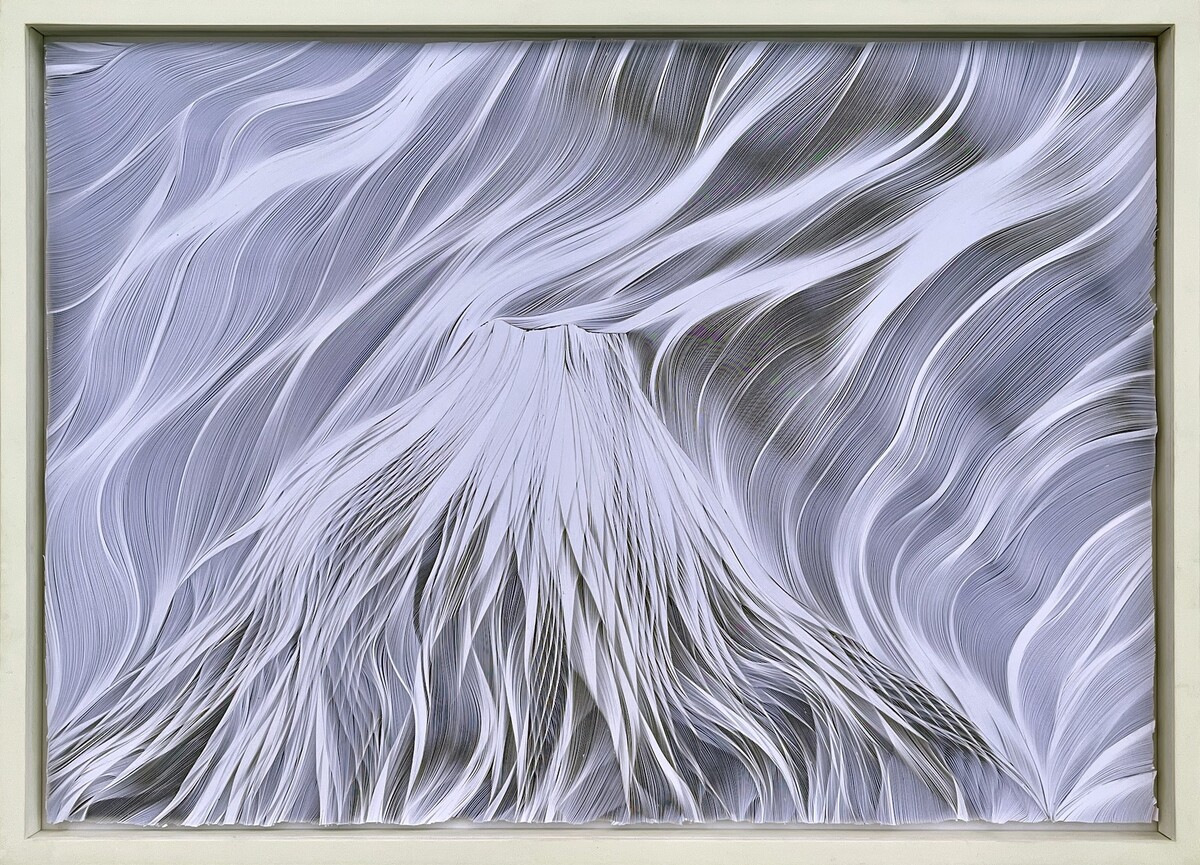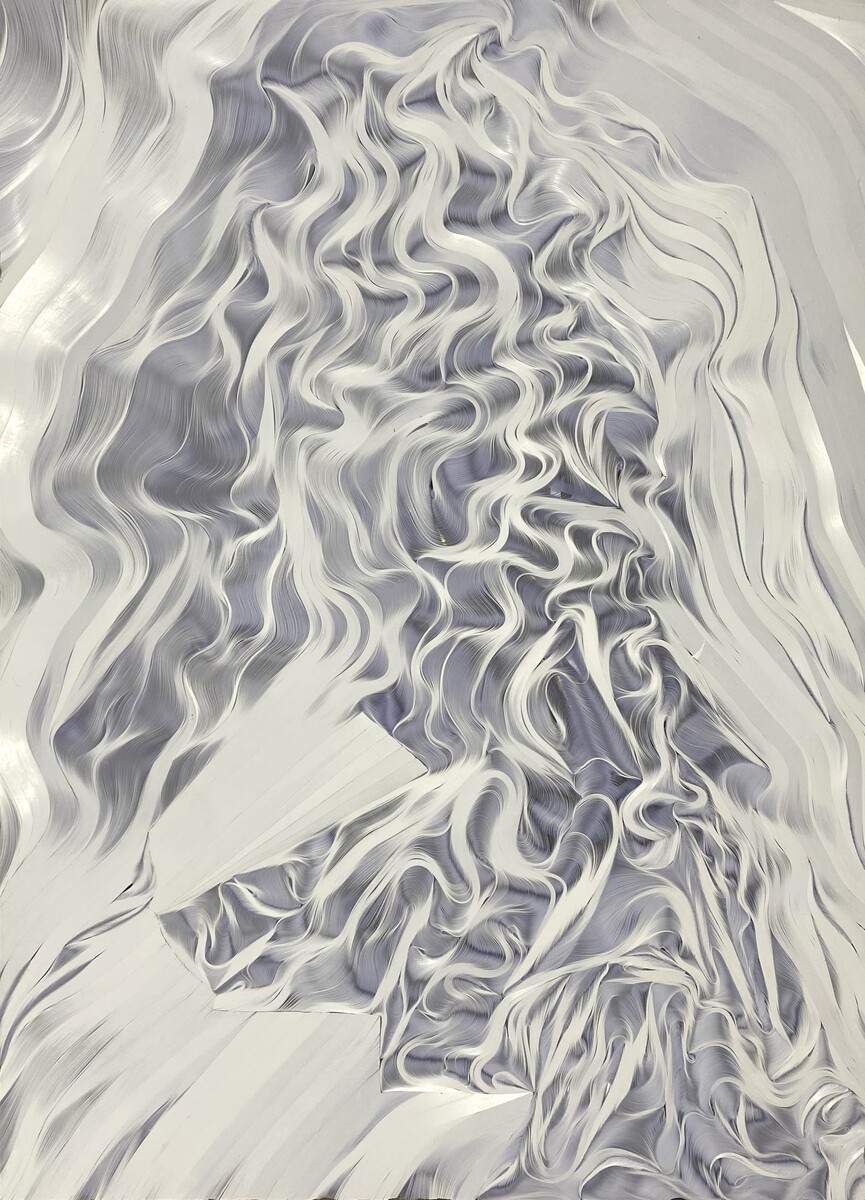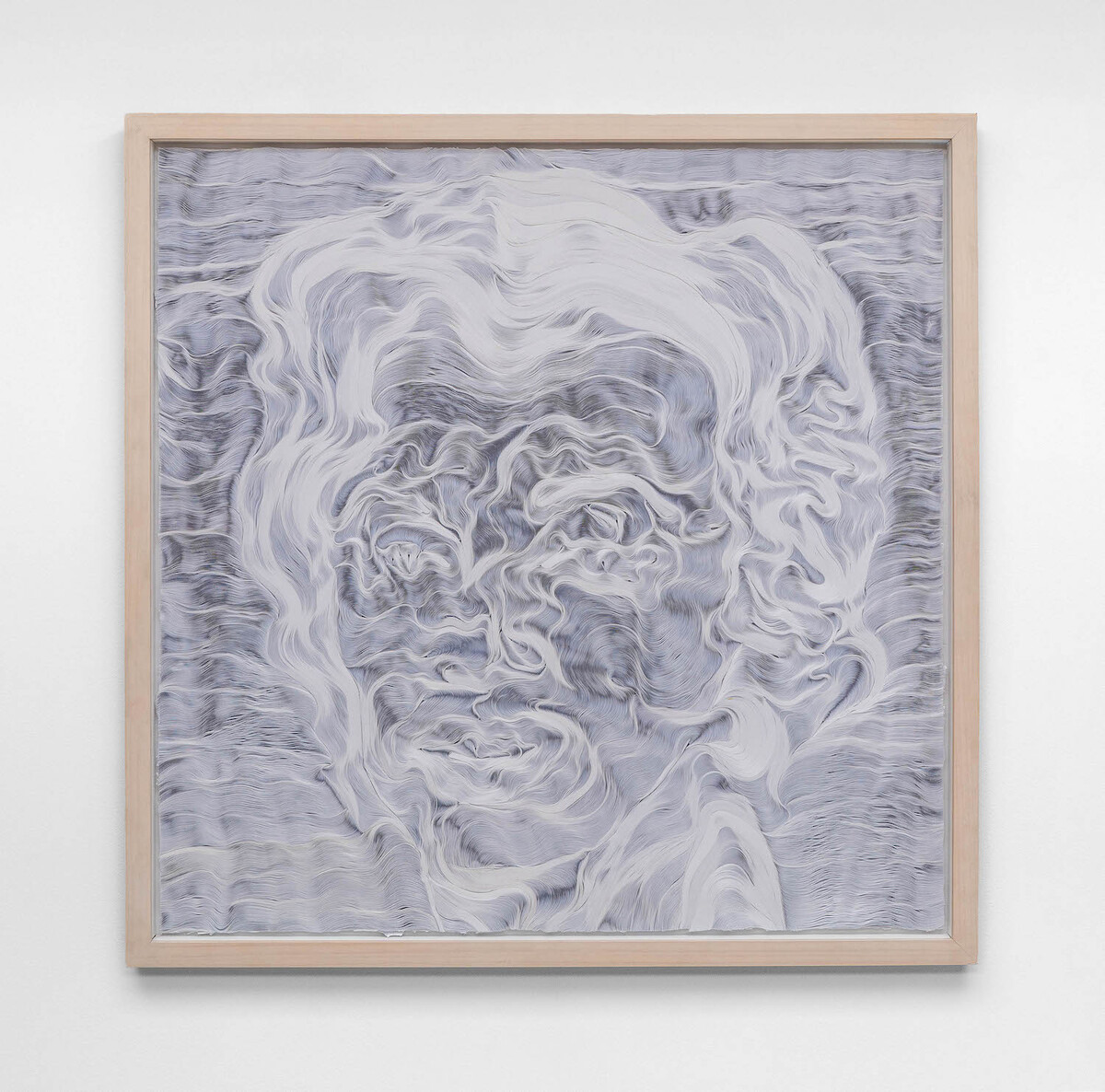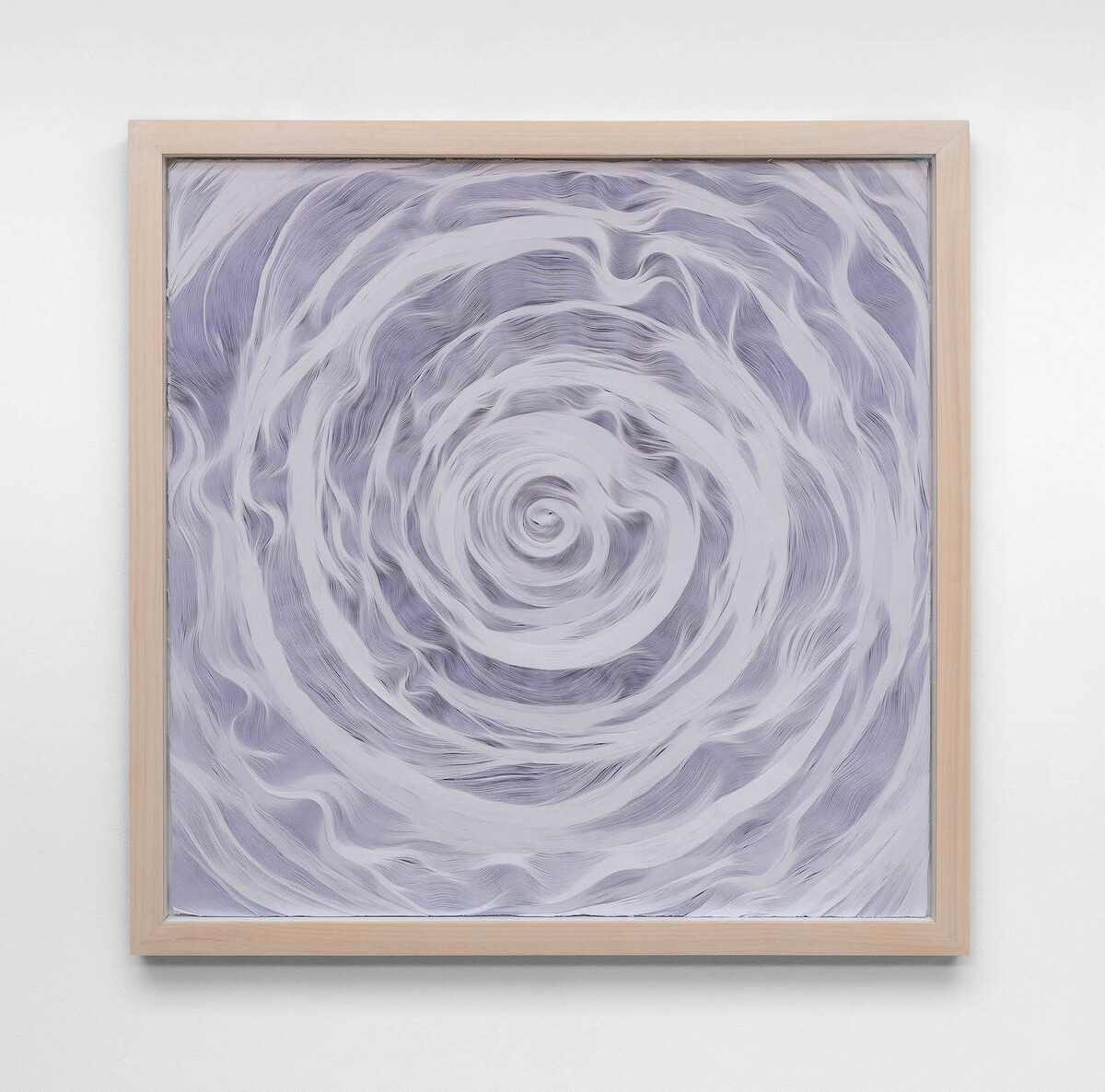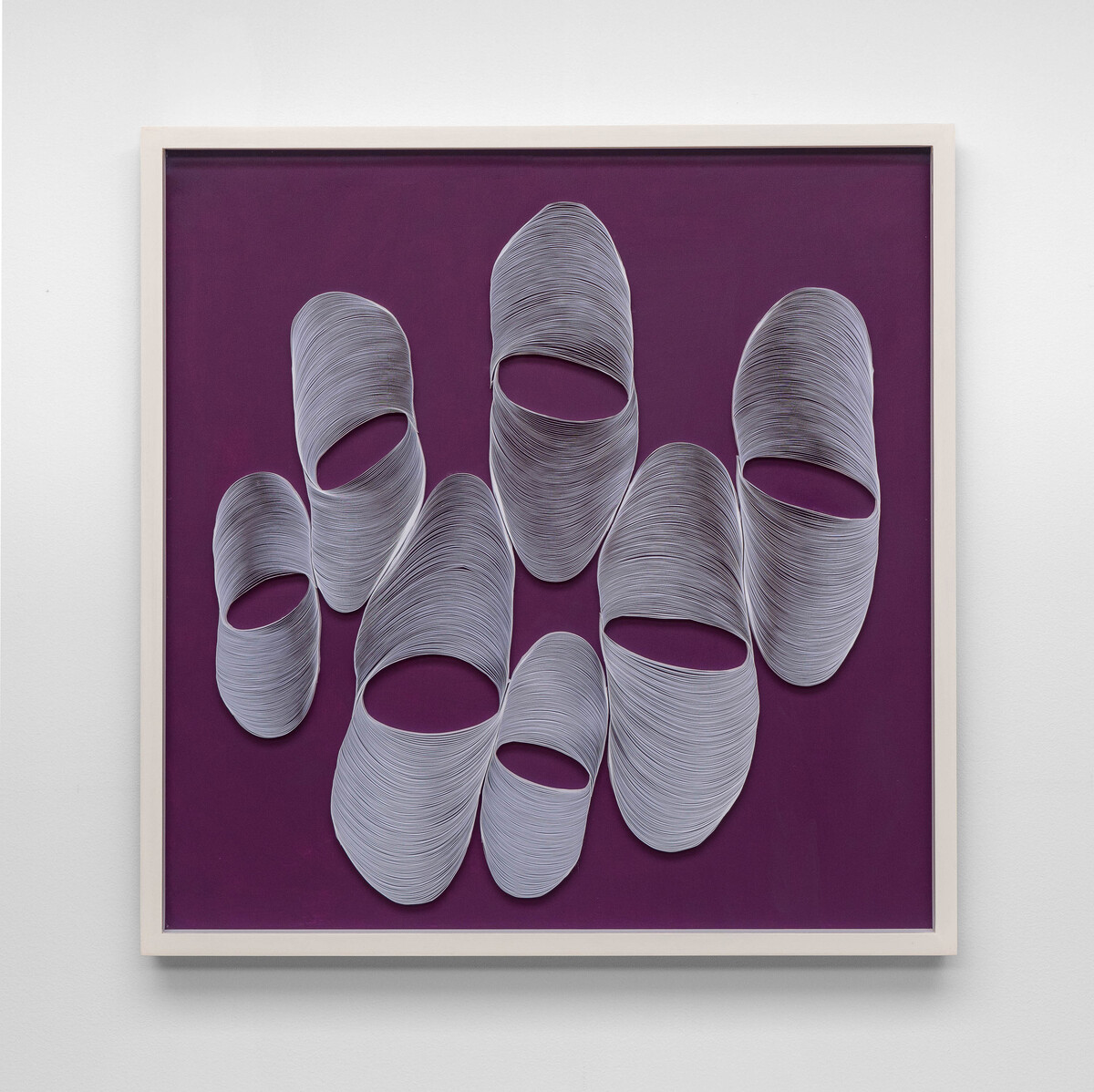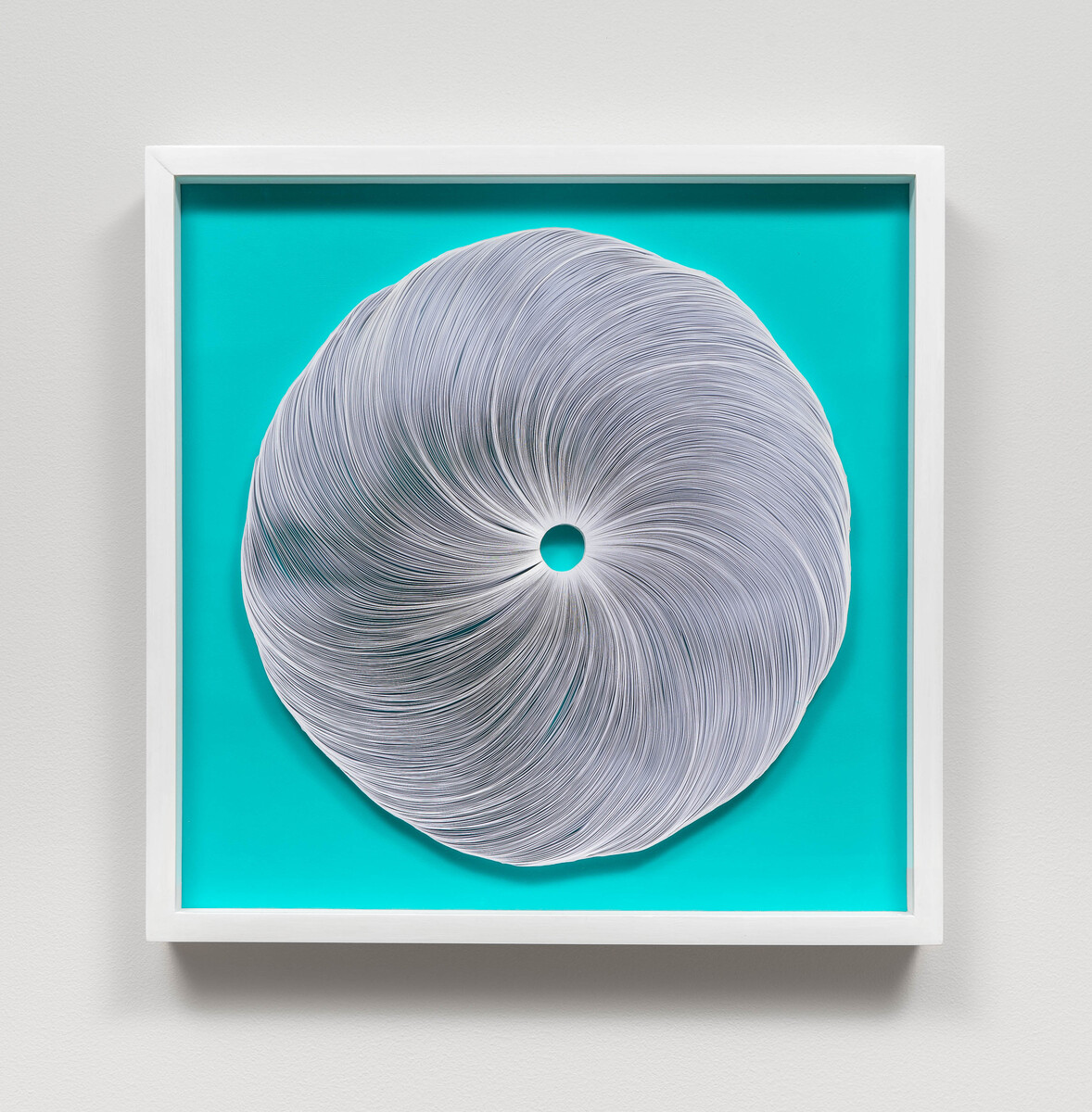THE MISSION PROJECTS is pleased to announce a two-person presentation featuring Peruvian artist Kenji Nakama and Chicago-based painter Jean Alexander Frater at Untitled Art, Houston in Booth B31. Both artists employ the power of texture to create visual and tactile experiences. Often considered a secondary element in art, texture becomes the focal point in this collection, inviting viewers to engage with the surface of the works in personal and thoughtful ways. Through the manipulation of materials and processes, these artists explore texture not just as a visual trait, but as an emotional and sensory language.
Kenji Nakama’s compositions are composed by manipulating blank white paper that he has surgically cut into long strips. Some works are representational – from Warhol’s iconic image of Marilyn Monroe to Duchamp’s Nude Descending a Staircase – and some are abstract, but all engage texture to elicit a sense of movement, the gestures of brushstrokes, or the illusion of oil paint dragging on a surface. These visual effects, produced by the dense accumulation of paper sheets, become evident as the viewer physically moves around the piece, changing their perspective and angle. The complex, meticulous arrangement of the paper sheets reveals the physical nature of the material, and the fragility of the paper creates a fluid conversation connecting optical, minimal, and geometric art.
Jean Alexander Frater experiments with materials inherent to painting and integrates other histories, traditions, and languages to build upon what is considered traditional painting and allow the materiality of the work to retain its voice. Originating within the tradition of Color Field abstraction, the works begin as lush expanses of pigment that fill oversized canvases and envelop architectural space. The canvases are then torn, wrapped, layered, and rebuilt, transforming the color field into a fragmented, scaled-down image — each piece reduced to approximately one-third of its original size. This shift creates an intimate, textured presence and a scale that invites proximity and touch. Paradoxically, the torn strips of canvas provide an uninterrupted visual path for forms to stretch beyond the frame; these extensions bulge outside the rectangular containment, dangling, hanging, or at times framing the painting itself.
Kenji Nakama’s compositions are composed by manipulating blank white paper that he has surgically cut into long strips. Some works are representational – from Warhol’s iconic image of Marilyn Monroe to Duchamp’s Nude Descending a Staircase – and some are abstract, but all engage texture to elicit a sense of movement, the gestures of brushstrokes, or the illusion of oil paint dragging on a surface. These visual effects, produced by the dense accumulation of paper sheets, become evident as the viewer physically moves around the piece, changing their perspective and angle. The complex, meticulous arrangement of the paper sheets reveals the physical nature of the material, and the fragility of the paper creates a fluid conversation connecting optical, minimal, and geometric art.
Jean Alexander Frater experiments with materials inherent to painting and integrates other histories, traditions, and languages to build upon what is considered traditional painting and allow the materiality of the work to retain its voice. Originating within the tradition of Color Field abstraction, the works begin as lush expanses of pigment that fill oversized canvases and envelop architectural space. The canvases are then torn, wrapped, layered, and rebuilt, transforming the color field into a fragmented, scaled-down image — each piece reduced to approximately one-third of its original size. This shift creates an intimate, textured presence and a scale that invites proximity and touch. Paradoxically, the torn strips of canvas provide an uninterrupted visual path for forms to stretch beyond the frame; these extensions bulge outside the rectangular containment, dangling, hanging, or at times framing the painting itself.

